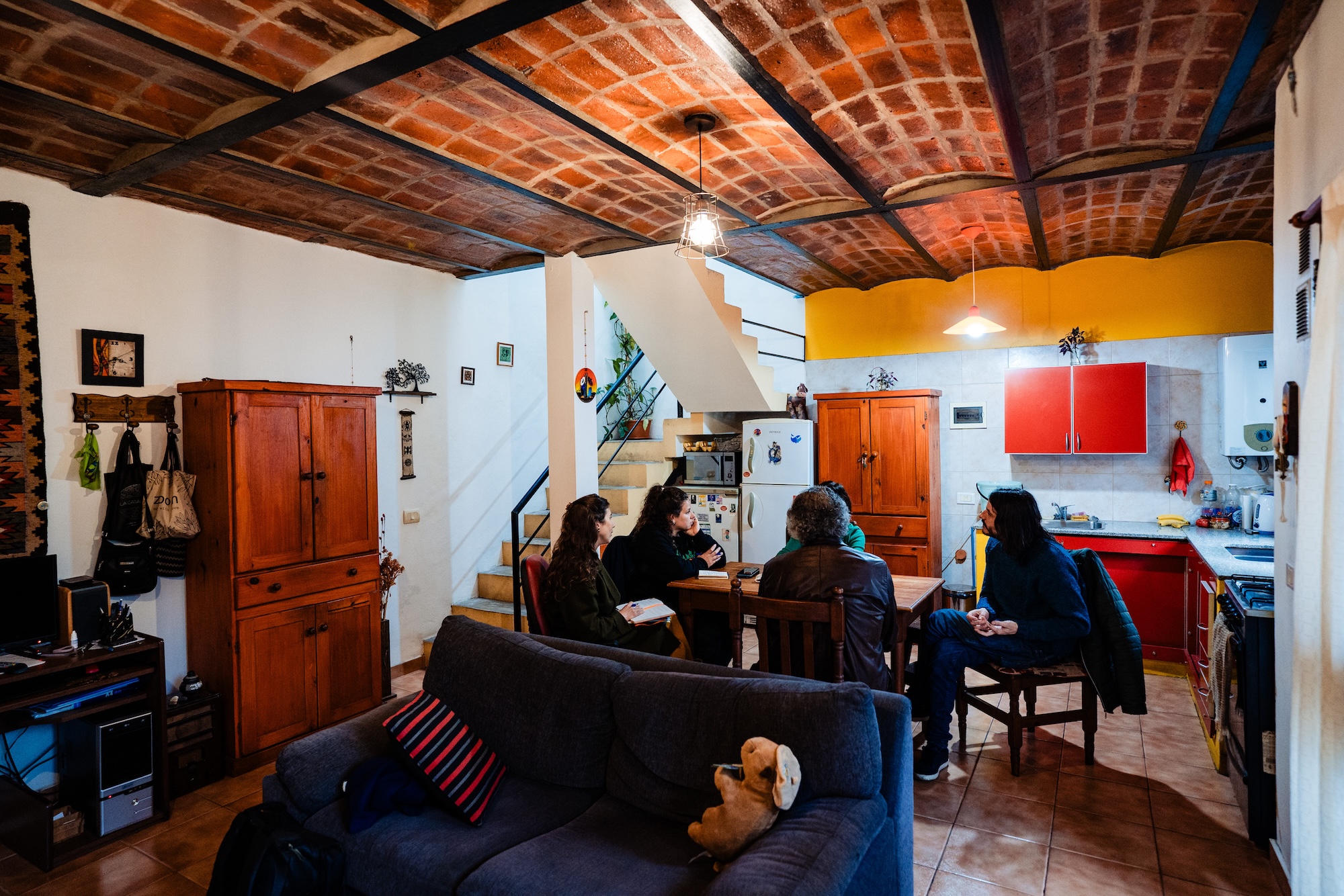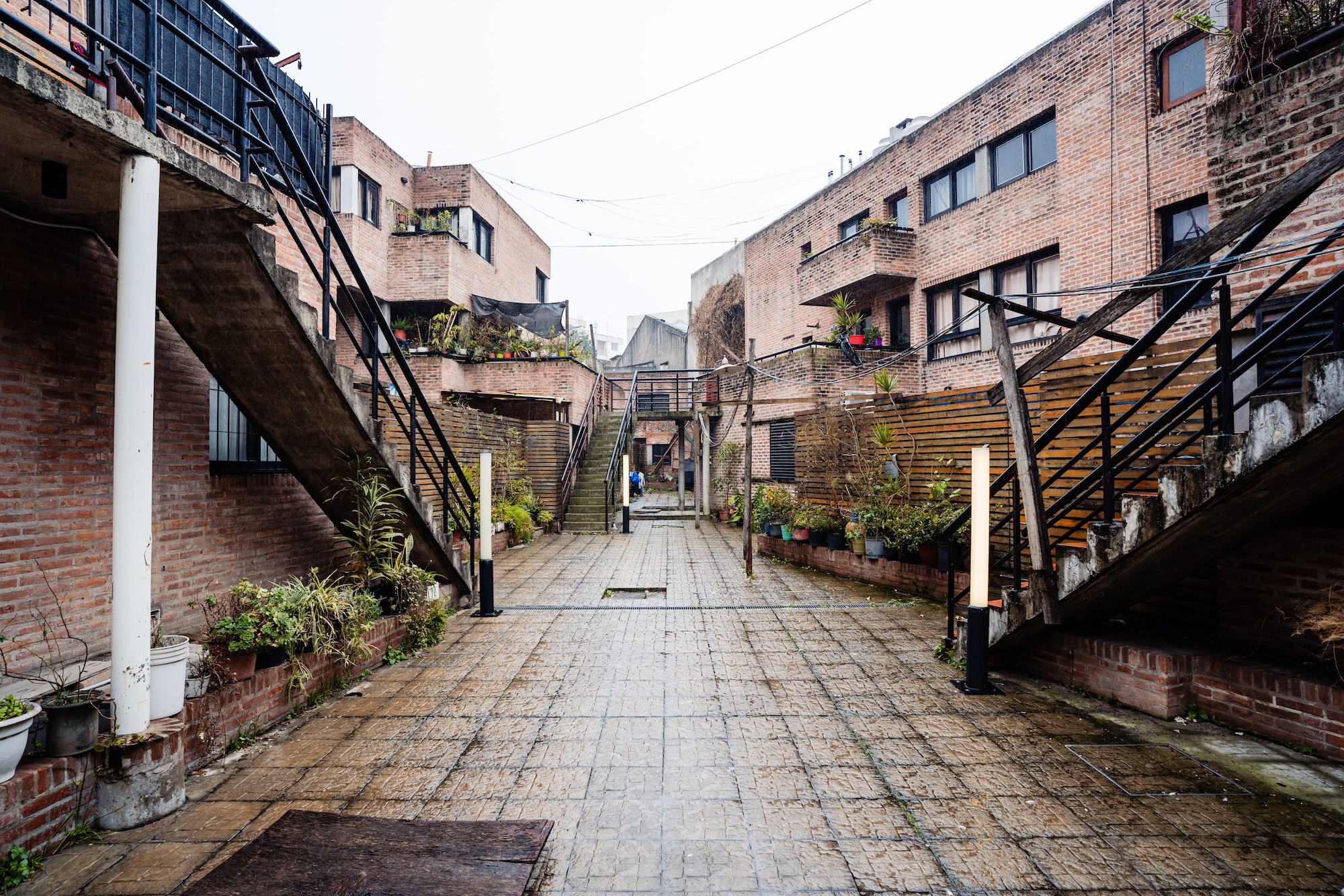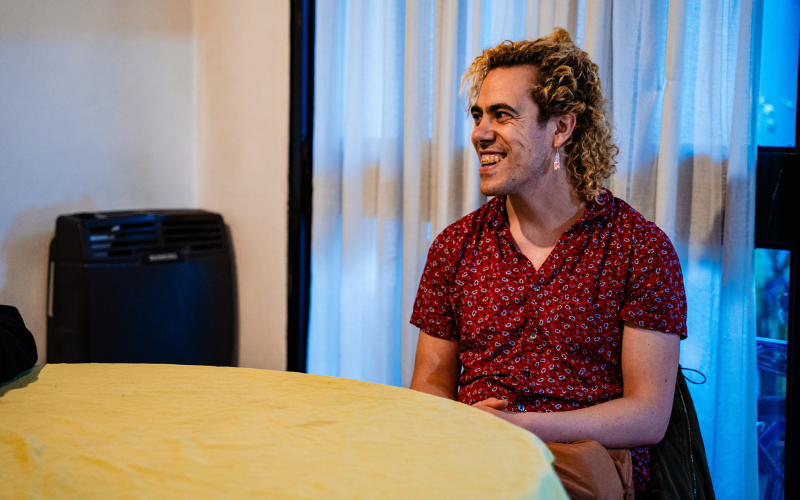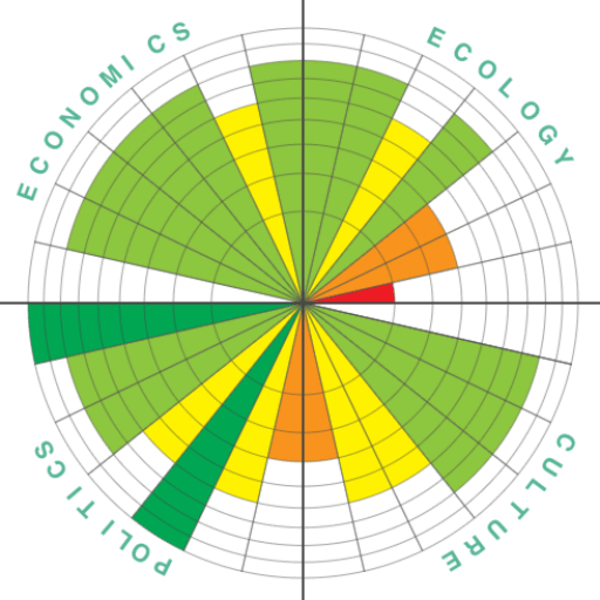 La Fábrica - © Movimiento de Ocupantes
La Fábrica - © Movimiento de Ocupantes La Fábrica - © Movimiento de Ocupantes
La Fábrica - © Movimiento de Ocupantes La Fábrica - © Movimiento de Ocupantes
La Fábrica - © Movimiento de Ocupantes
City
Buenos Aires
Main actors
Local Government, Private Sector, Community / Citizen Group, NGO / Philanthropy
Project area
Neighborhood or district
Duration
Ongoing since 2007
La Fábrica is a housing cooperative project in Barracas, central Buenos Aires, providing 50 good quality, attractive, spacious and affordable homes for 150 people. 40% of residents live under the poverty line and suffer from welfare cuts and the consequences of high inflation. This project allows them to live centrally in the city and access secure, high-quality housing.
The project also focuses on building residents’ capacity and fostering a sense of community and integration with the neighbourhood.
Full project summary originally published by World Habitat Awards.
World Habitat Awards
This project was awarded the 'World Habitat Awards' in 2025 in the following category: Silver.
Argentina is experiencing the highest poverty rates seen in 20 years, coupled with soaring inflation and rental prices, making the situation worse. Many of Buenos Aires’ residents are living below the poverty line and are unable to afford a decent home.
The Occupants’ and Tenants’ Movement (Movimiento de Ocupantes e Inquilinos, MOI also known as the Federation of Self-Managed Cooperatives), has a track record of fighting poverty, habitat inequality and housing injustice in Argentina and is the organisation behind La Fábrica.
The project aims to offer an alternative to decent housing outside the profit-driven approach, which excludes people on middle and low incomes and denies their right to the city. The approach goes beyond housing and promotes access to employment, the right to beauty and collective organisation. Developed as a response to inequality and capitalism, it also offers an alternative to the inadequate, alienating features of traditional social housing – small, unattractive, remote, and with no participation of residents.
There are three main actors involved in MOI’s collaborative production model: the Housing Cooperative, the Work Cooperative, and the Interdisciplinary Professional Team. These actors collaborate and reach agreements non-hierarchically. Linking skilled labour, the provision of machines and tools, professional work, and self-help work not only improves participants’ skills, it also consolidates the collective process and optimizes public resources.
Housing Cooperative Model. Prospective residents get to know MOI through word of mouth, or via community-based organisations. There is no specific focus or criteria for participation, only housing need. Residents in MOI’s projects are majority female but social mixing is preferred when forming groups.
Interested parties approach the organisation and begin an ‘integration process’. This is structured in three steps: entry, training and pre-cooperative. Once completed, members access an existing cooperative, or a new one is formed. This process usually takes between nine months to a year.
The first task for a newly formed cooperative is to obtain access to land. For this, three committees are formed: 1) participation, 2) contributions and 3) mutual aid. Once land is secured, the cooperative enters the execution stage. At this point two more committees are incorporated: 4) purchase and 5) construction. Members are both quantitatively and qualitatively evaluated during these processes, to measure attendance, involvement and commitment.
Collective Ownership. The issue of collective ownership is discussed from the outset, and its various aspects - economic, legal, security of tenure, cultural, psychosocial (fears) - are widely debated during training. When the time comes to form a constitution, each cooperative decides whether to follow an individual or collective ownership model. MOI encourages the latter where the cooperative remains the owner of the whole and each household constitutes a user.
The shift towards collective ownership is deeply challenging to dominant culture. Developed gradually through collaborative construction practices, it embodies indigenous reclamation of ancestral communal property and requires interaction and negotiation with the state, in a process of institutional transformation.
The cooperative, through its committees, defines the work plan for the maintenance of common spaces and the structure, deciding what can be dealt with by mutual aid and what needs to be outsourced and to whom, etc.
Due to their participation in the building phase, and the construction, organisational and community skills they have acquired, members have ownership of the space and are familiar with its structure and materials.
Access to central land. The land, in a central and sought-after area of Buenos Aires, was acquired in the year 2,000 when land prices were at a historic low. La Fábrica was just one amongst many other buildings abandoned due the challenging soio-political environment. The recently created Law 341 meant that financing was suddenly available for these kinds of initiatives in Buenos Aires. Having already established a cooperative next to La Fábrica, MOI was able to make direct contact with the owners who were enthusiastic about the proposal.
Renovation of existing property. The original character of the building promoted an innovative design that not only enabled the original essence and materials to be retained and reused, but also encouraged the mixing of old and new, private and shared spaces. The cooperative developed techniques to reuse materials, and replicate traditional ones, techniques that MOI has used in other projects.
Collaboration between different stakeholders. Residents are involved from inception and collaborate with the work cooperative who provide qualified labour, machines and tools when works begin. The Interdisciplinary Professional Team provide support throughout the process, assisting in social, architectural, legal and accounting areas
Social outcomes
The organisational processes in the La Fábrica development have contributed to the creation of:
- a nursery, which since 2005 has provided early years education for the neighbourhood, with more than 500 children passing through its classrooms.
- a community baccalaureate for young people and adults (over 100 women and young people completed their secondary studies).
- a community integration programme (over 10 neuropsychiatric hospital outpatients joined MOI cooperatives).
- a transitional housing programme, where households gain first-hand experience of cooperative coexistence in a non-profit rental.
Environmental outcomes
- The project reused the building’s original structure, incorporating the new construction into the existing one. The metal structure was moved to avoid the purchase of new materials.
- New slabs were replicas of the original brick vault slabs.
- Homes have been built with double walls and an air chamber to provide good insulation. This allows houses to stay naturally cool in summer without the need for air conditioning and reduces heat loss in winter, minimising the use of heating with an estimated 30 to 60% energy saving in the home.
- Skylights in each home maximise natural light during most of the day and throughout the year.
The lead organisation for the project is The Occupants’ and Tenants’ Movement (Movimiento de Ocupantes e Inquilinos, MOI also known as the Federation of Self-Managed Cooperatives), has a track record of fighting poverty, as well as habitat and housing injustice in Argentina.
The total cost of the project was $1.5 million USD, spread over 10 years. The majority was covered by a loan provided by the City of Buenos Aires, following Law 341.
The law determines that the City must transfer financial resources to community-based organisations, for three purposes:
- Land acquisition: the City Housing Institute requires that once the land is found, a proposal is presented to be verified and approved for its viability according to the urban code.
- Execution: the complete architectural project is sent to the City Housing Institute along with documentation, calculations and a budget for financial approval. Once approved, the cooperative receives 15% of the total budget to begin work, and the remaining resources are disbursed as work progresses.
- Interdisciplinary professional support. In this case it was provided by MOI’s own team. The City Housing Institute has a list of approved technical teams for this role, which includes MOI.
The loan term for the project was 30 years with a 0% interest rate. Residents only pay the capital of the loan, plus any maintenance costs as agreed by the cooperative, which is currently $5 USD per month. The law allows these funds to be paid individually or to be pooled, according to the number of members that make up a cooperative and their preference.
The project has been evaluated in diverse ways:
Internally, MOI carried out systematic and regular evaluations with their interdisciplinary team starting with the formation of the cooperative and during construction. The data gathered looked at participation of members, management of finance, mutual aid provision, work progression, assemblies, etc. It aims to strengthen the ability for self-management and produces simple indicators of family situations, the main economic aspects of cooperative life, and progress of work.
Externally, La Fábrica has been evaluated with other MOI projects, not on its own.
In 2013, MISEREOR (one of MOI’s funders) evaluated MOI’s cooperatives, including La Fábrica, looking at the self-help cooperative model’s social, personal and group skills aspects.
In 2018, Johns Hopkins University carried out a survey to look at living conditions in cooperatives in receipt of funding from Law 341, which included La Fábrica. It analysed various aspects of residents’ daily life, their organisational capacity for administration, management and maintenance of the buildings, their relationship with the neighbourhood and development as citizens. It developed indicators of costs, quality and access to urban infrastructure.
During the pandemic, the University of Buenos Aires conducted interviews as part of a project looking at how care and support among families benefitted from organisational skills development acquired. The results were shared with policymakers and MOI uses them in their workshops and strategies.
The Programme has faced many difficulties over the past years: social welfare cuts, inflation and devaluation have hit the most vulnerable households hardest thus creating more demand for affordable housing, whilst successive local and national governments have challenged funding for the Programme.
Resistance and lack of knowledge of the public bodies involved have proven to be significant obstacles. For example, the regulating body for cooperatives ignores or hinders the exercise of free choice for collective property. As a result, cooperatives face bureaucratic obstacles before they can obtain registration. Although regulation exists, this tends to be ignored. In the same way, it took the local body responsible for Law 341 years to obtain the permissions that enable collective property to be an option.
Another challenge is that collective property requires strong institutional support in order to provide trust and security to residents, promote a conscious and responsible (non-speculative) use of resources, and to present the city and property through its social function and as common good.
The La Fábrica development was helped by the change of legislation (in which MOI played a key role). The legal framework of Law 341 allowed for replication of the model by a wide range of actors in Buenos Aires.
Public policy development and securing local government commitment are essential to the viability of new self-help cooperative projects, especially those concerning the most vulnerable groups. MOI’s ambition for the future is for Law 341 to be recognised on a national level, and to build upon discussions that have already taken place in congress. In the meantime, they are focussing on building relationships and advocating at the local and provincial level.
Currently MOI has similar developments underway and is in discussions about new projects in Rosario and Santa Fe. It is working on pilot projects, building relationships with key actors, and creating new work cooperatives. In Rosario the land has been secured, and discussions are ongoing for securing financing from the City Housing Institute for construction work.
At the regional level, the Latin American Secretariat for Housing and Popular Habitat (SELVIHP) has been a vehicle for sharing knowledge and practice and promoting initiatives and conducive policy in countries such as Chile, Brazil, Venezuela and Panama.
On Map
The Map will be displayed after accepting cookie policy

